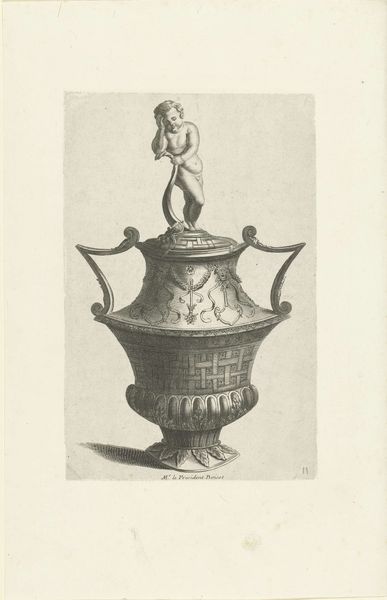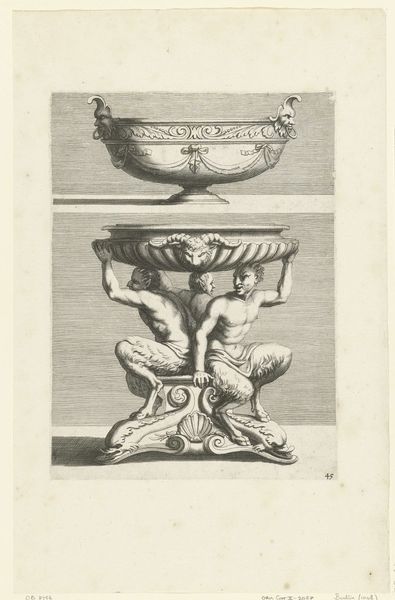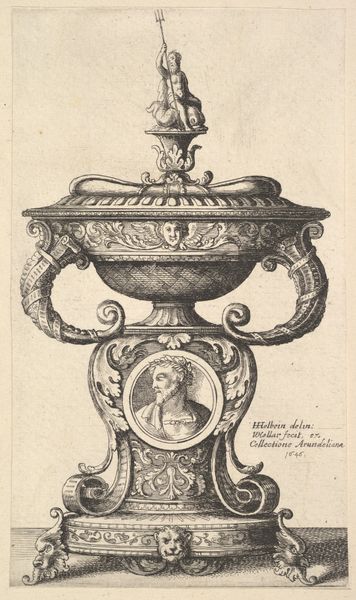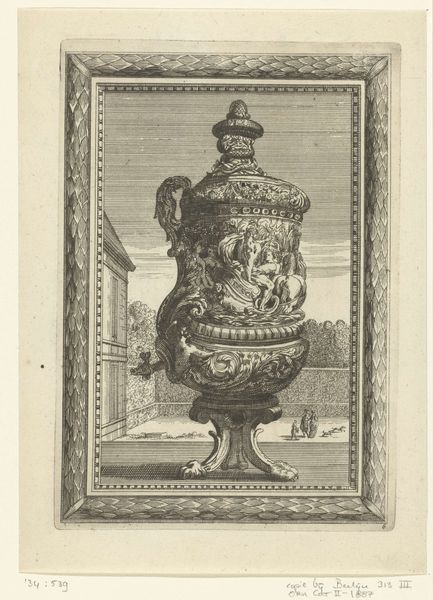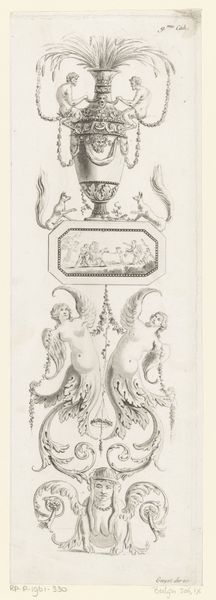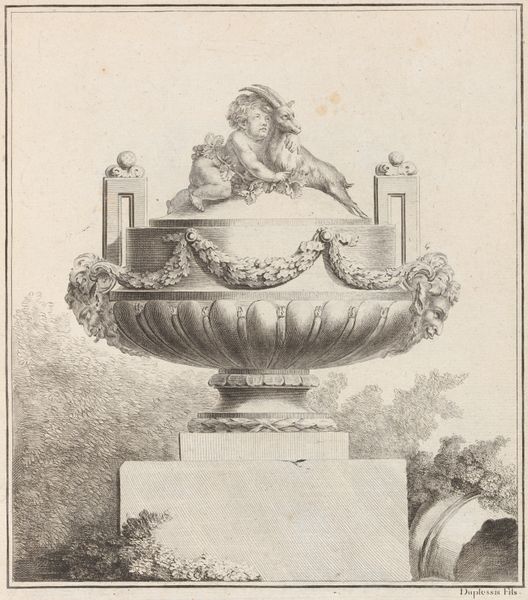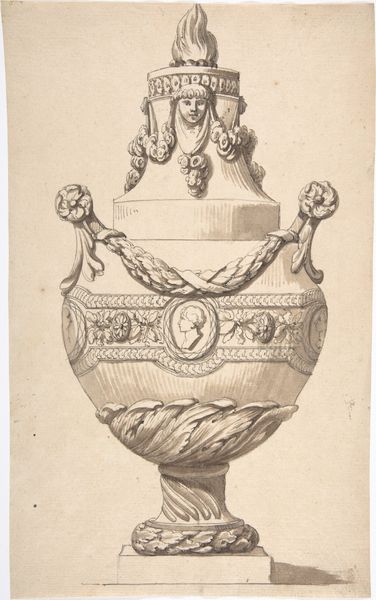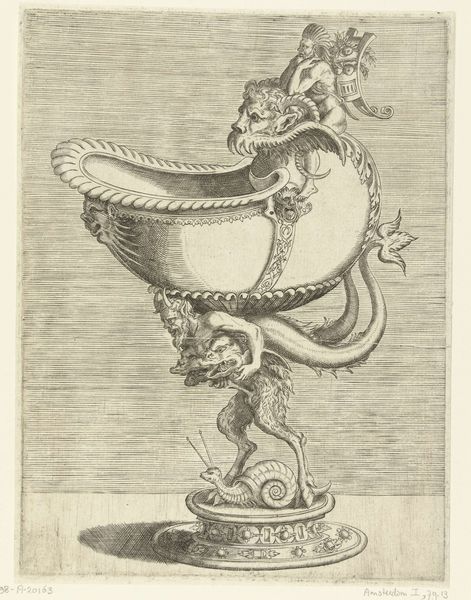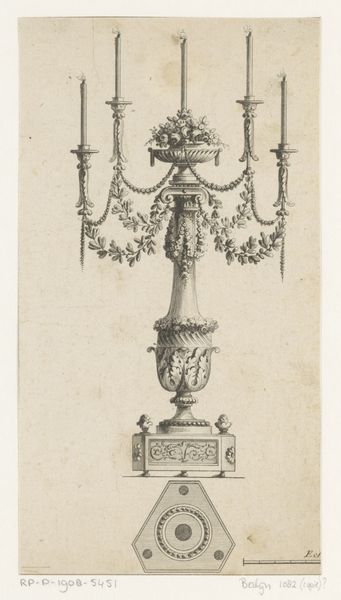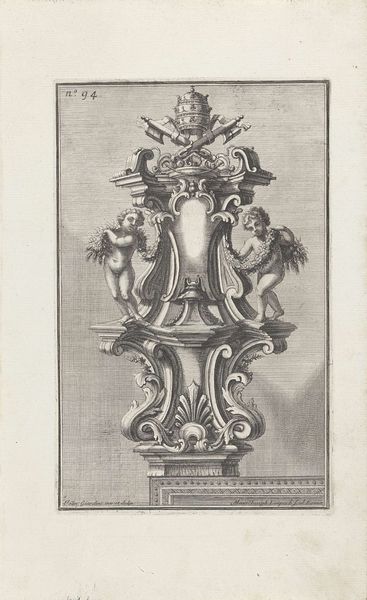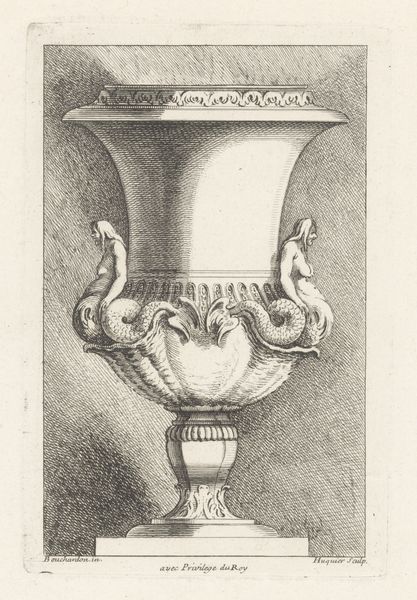
drawing, metal, sculpture, engraving
#
drawing
#
baroque
#
metal
#
form
#
sculpture
#
line
#
engraving
Dimensions: height 274 mm, width 200 mm
Copyright: Rijks Museum: Open Domain
Curator: Editor: This engraving from 1667, "Olielamp en voetstuk of bassin" by Françoise Bouzonnet, depicts an ornate oil lamp and pedestal. The detail is remarkable, but it also feels very… removed, almost like an instruction manual. What do you see in it? Curator: I see an articulation of baroque values through its meticulous rendering of form, yes, but also an insight into the culture of consumption surrounding luxury goods in the 17th century. Engravings like these weren’t just aesthetic objects; they were blueprints for skilled artisans. Editor: Blueprints? So, like Ikea instructions for elaborate metalwork? Curator: Precisely! These weren't mass-produced objects, yet the image facilitated a type of distributed production. The engraving becomes a crucial component of the object's creation, documenting the intricate labor involved. What is the relationship between craft and artistic production in the Baroque period? The drawing blurs boundaries between design and reproduction, suggesting an intertwined economic and cultural reality. Notice how every line, every curve is meticulously rendered. Editor: So, it’s about showing the elite exactly *how* to show off their wealth? Curator: Exactly. And more than that, the print also *becomes* a part of that system. Each line signifies labour and cost and can therefore itself be seen as currency. Consider also the global trade networks that supplied the materials and labor required to execute such designs; from where do these materials originate, who crafts them? Editor: That’s fascinating! It makes me consider all the unseen labor that goes into the things we take for granted, even now. Curator: Precisely! Thinking about art through the lens of its material creation can open up new pathways to understand past economies and cultural exchanges. We tend to place artworks high up as achievements of pure talent. Considering the conditions of artistic labor and access to materials challenges these traditional viewpoints, making us consider *what* are, truly, the means of production.
Comments
No comments
Be the first to comment and join the conversation on the ultimate creative platform.
